Great Design Plant: Arbutus Menziesii
http://decor-ideas.org 04/08/2015 23:13 Decor Ideas
The West Coast native madrone (Arbutus menziesii) tree richly deserves all the admiration and reverence it receives. It has a reputation for being finicky but is actually quite sturdy and carefree, as long as its requirements are met. Requiring no additional water once established, this drought-tolerant native is a perfect fit in water-wise western gardens.
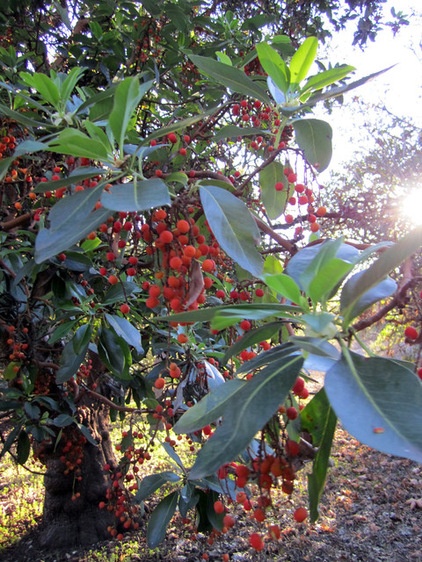
Botanical name: Arbutus menziesii
Common names: Pacific madrone, madroña, madroño, arbutus
Origin: Native to western coastal North America, from British Columbia south to California
Where it will grow: Cold hardy to approximately 10 degrees Fahrenheit (USDA zones 7 to 9; find your zone)
Water requirement: Thrives in a mild, coastal Mediterranean climate (dry summers and wet winters); once it’s established, no supplemental summer water is needed and, in fact, is detrimental to the tree, especially during hot summer weather
Light requirement: Light shade to full sun
Mature size: In the wild, Pacific madrone can easily exceed 50 feet in height but is rarely seen above 35 feet tall and 25 feet wide in cultivation
Benefits and tolerances: Flowers provide insect nectar and pollen for insects; hummingbirds feed on the nectar, too; the fruit is enjoyed by birds and mammals alike; because it tolerates dry locations and thrives on excellent drainage, it is also a valuable problem solver for south- and west-facing slopes and hard-to-water areas of the garden.
Seasonal interest: Sprays of honey-scented, creamy white flowers in spring are followed by hard green berries that turn a bright reddish orange in fall; the winter look is most elegant: lush green foliage, lingering clusters of bright berries and that sinewy, warm cinnamon brown bark.
When to plant: Fall through spring is best. A young tree may require some summer water, but once it’s established, keep the root zone well outside the reach of irrigation.
Photo by Bri Weldon
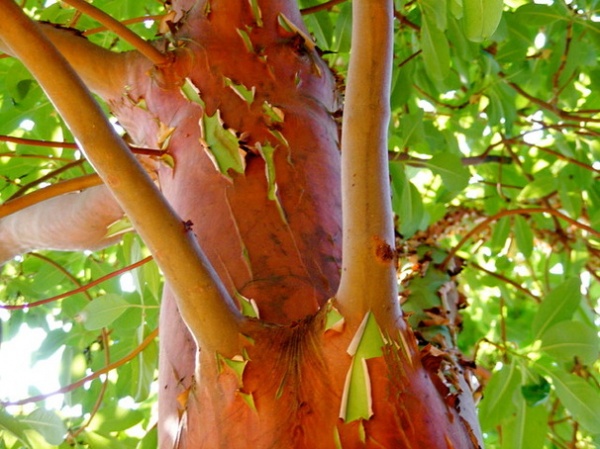
Distinguishing traits. Pacific madrone is the largest, most stately broadleaf evergreen in its region and is a prized specimen tree, native only to the Pacific Northwest and coastal California. It is a member of the heath family (Ericaceae) and develops a stout burl below ground — an adaptation to wildfire.
Its cinnamon-brown, peeling, sinewy trunk and distinctive rounded crown are much-beloved features. The cinnamon-brown bark flakes off in summer, revealing startling chartreuse new bark underneath.
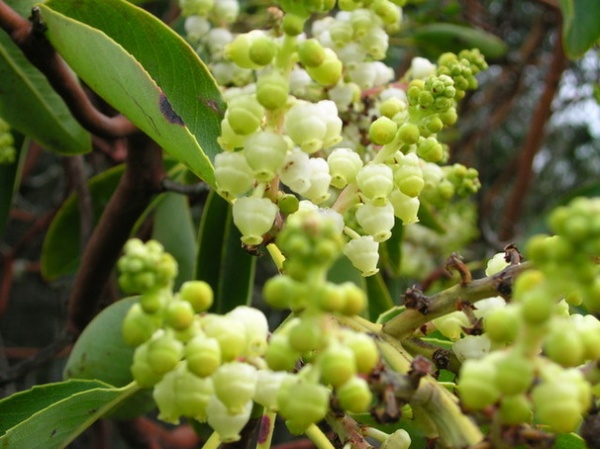
As mentioned above, honey-scented, creamy white flowers appear in spring, followed by berries that turn a bright reddish orange in fall.
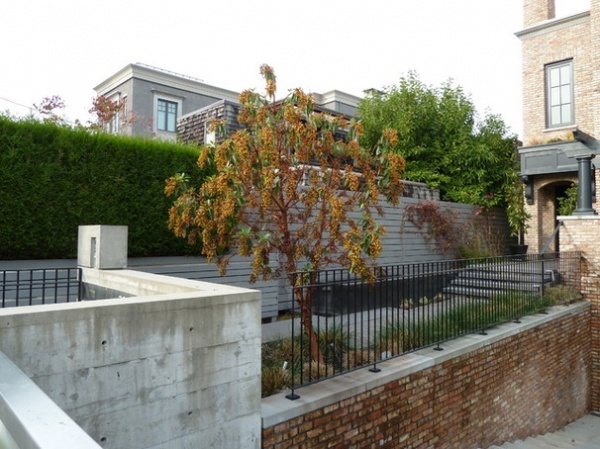
How to use it. Pacific madrone is the ideal tree for a dry, untended area, such as on a south-facing bank or in dry, sandy soil where little else grows. Madrone grows slowly at first, building up steam in its youth, ultimately growing more than 1 foot per year.
Grown in sun, it makes a wonderful upright specimen in youth; the crown broadens with age, eventually creating a wide-spreading canopy. Grown in heavy, rich soil or shade, the tree can lean. It’s rarely an issue for the tree’s health but can be avoided by providing full sun, growing the tree in unamended soil and avoiding supplemental water once it’s established.
Photo by Wendy Cutler
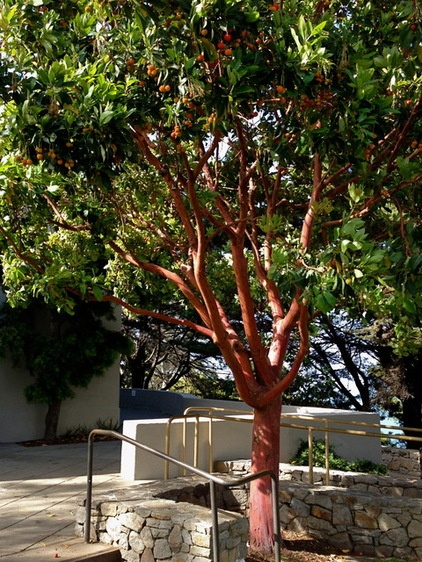
Planting notes. Pacific madrone has a reputation for being temperamental, partly because it is sensitive to drainage changes and can perish if irrigated in summer. It also resents root disturbance, including being transplanted. Yet its basic requirements are simple: a well-drained, sunny location without supplemental summer irrigation. West- and south-facing slopes are particularly good. It is susceptible to foliar fungus and phytophthora root rot, but well-sited trees left undisturbed rarely succumb to this problem.
Pacific madrone is the perfect tree for a wild part of the garden, amidst other West Coast and Mediterranean natives. Avoid planting anything in the area below its future canopy that requires regular supplemental summer water.
Keep in mind that Pacific madrone sheds old foliage over a monthlong period in early summer. The foliage can be raked or left in place to provide a natural mulch.
There are no cultivars available currently, as the plant is commercially propagated by seed.
Photo by vhines200
More:
Lay of the Landscape: Mediterranean Garden Style
Learn more about gardening with native plants in your area
Related Articles Recommended












